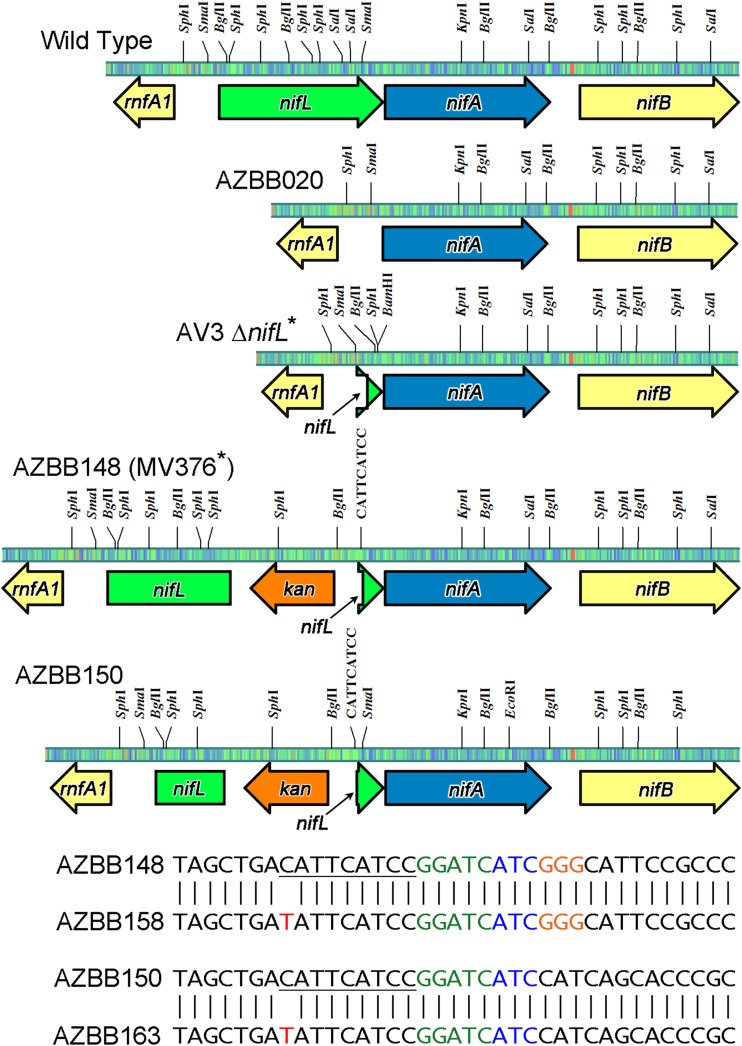FIG 7.
Illustration of different approaches to deregulate nitrogen fixation and excrete ammonium through manipulation of the nifLA operon. Shown is an illustration of the nifLA genome region from A. vinelandii (wild type) and various final constructs developed here or reported by others (7–9). The ΔnifLA::nifA construct A. vinelandii AZBB020 resulted in a nitrogen-fixing (Nif+) phenotype but did not increase levels of ammonium in the extracellular space, as initially anticipated. The strain A. vinelandii AV3 ΔnifL constructed by Ortiz-Marquez et al. (9) took a similar approach but left a small segment of nifL intact and resulted in μM levels of ammonium and a Nif+ phenotype (drawn as described previously [9]). Strain A. vinelandii AZBB148 was constructed similar to the approach to construct A. vinelandii strains MV376 and MD367 (7, 8), except that pPCRKAN4 was used as the source of the kanamycin cassette instead of pUC4-KIXX. A. vinelandii AZBB150 was constructed so that this same pPCRKAN4 derived kanamycin cassette would be inserted into nifL slightly further upstream while removing a larger section of the nifL gene. Both A. vinelandii AZBB148 and AZBB150 were found to be Nif− but became Nif+ following a spontaneous mutation to yield A. vinelandii AZBB158 and AZBB163. The location of this mutation (underlined region) is shown in the alignments and is also marked on the illustration for the nifLA region of each of these strains. The sequence shown in green represents the remainder of the polished BamHI site, while the sequence drawn in blue is the remnant of the EcoRV site. The remainder of the SmaI site used here and previously to construct strains MV376 and MD367 (7, 8) is shown in orange for A. vinelandii AZBB148 and AZBB158. The C-to-T mutations for A. vinelandii AZBB158 and AZBB163 are shown in red. The figure was constructed using the program pDRAW32 (AcaClone Software).

